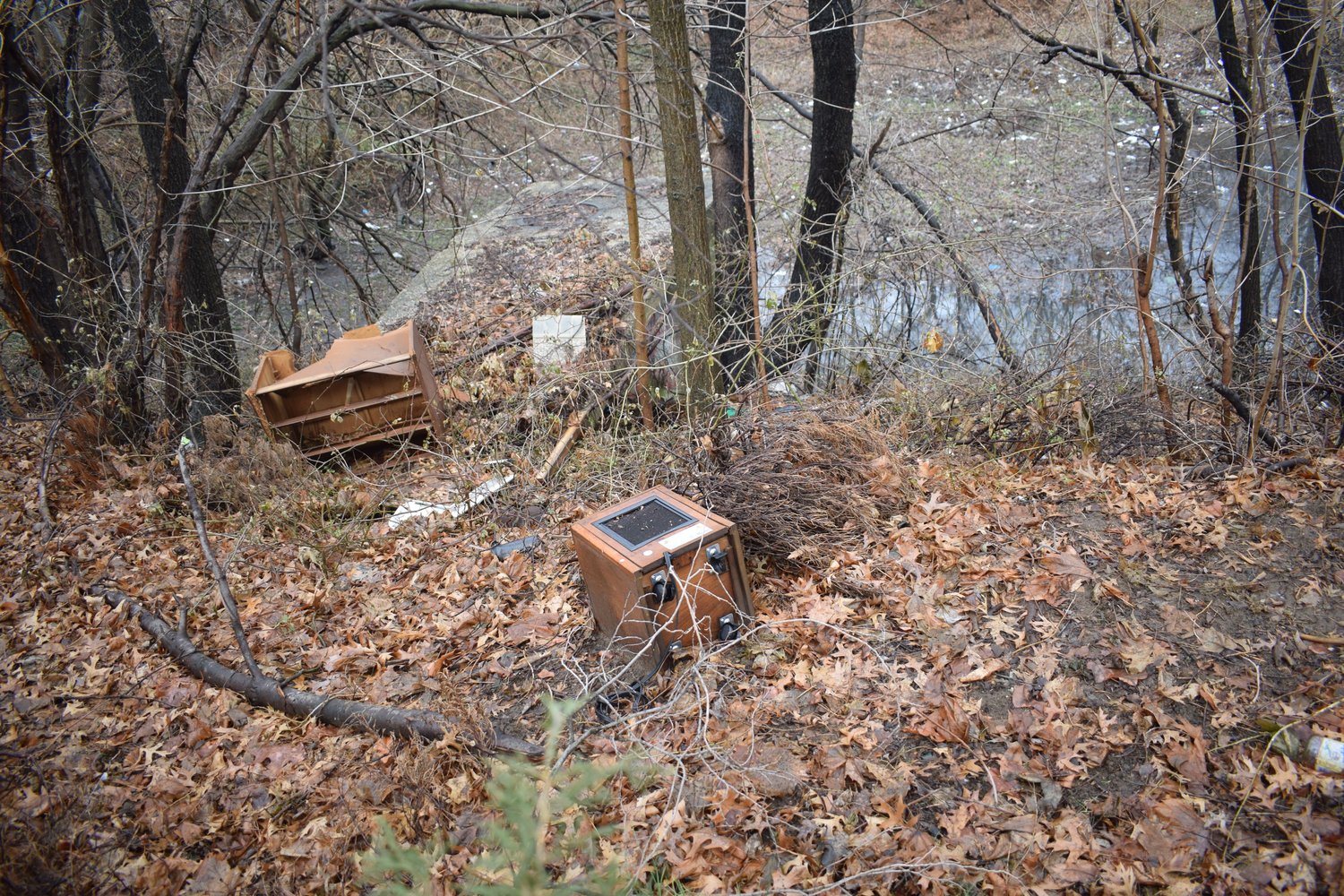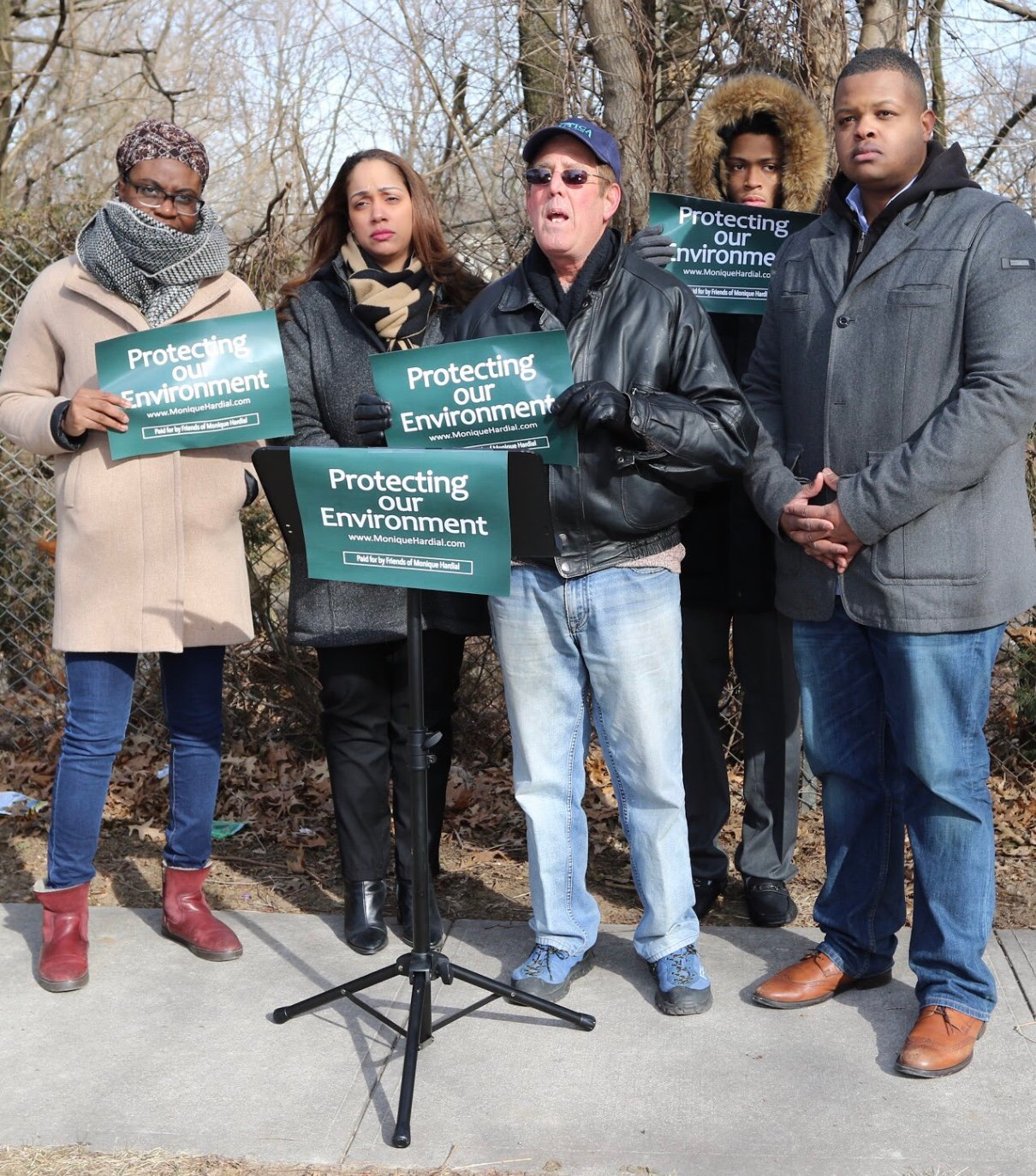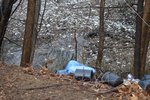Sump in a slump
Elmont residents worried over water basin pollution
Elmont has long been a source pride for Andrew Prescia, 75, who grew up in the community in the 1950s. When he returned to his childhood home on Travis Avenue to care for his aging parents 20 years ago, he rebuilt their old house, which he inherited after their deaths. Prescia has maintained the home, but he has watched as the sump across the street has continued to fill up with trash and branches.
The sump is a storm water recharge basin that is maintained by the Nassau County Department of Public Works. Prescia has long had arguments with the department over maintenance at the site, which is littered with thousands of plastic bottles and bags of trash.
On Feb. 3, after five years of advocating for the upkeep of the basin, Presica joined community advocates Carl Achille and Monique Hardial in asking for help from the New York State Department of Environmental Conservation to demand that the county clean up the site.
“We’ve called on the county throughout the years, but it all goes in one ear and out the other,” Prescia said. “They’ve neglected this for too long.”
Advocates see a dump site
The county’s Storm Water Recharge Basin No. 351 is at Benson and Kiefer avenues. Although trees and vines keep it hidden in the spring and summer, passersby can see how much garbage is there during the winter. In early February, the ground at the center of the basin was hidden under empty bottles and, Presica added, condoms. Just over the fence, large trash cans and bags were strewn near tilting tree stumps. A broken furniture set was at the basin’s mouth.
Prescia and his neighbors have made many calls to the county to clean up the mess, but whenever DPW workers have come to fix the problem, Prescia said, he has watched them do what he described as a “terrible job” in cleaning up the trash. He spoke of a supervisor, who he said was “slacking,” and half-empty trash cans that were hauled out of the basin. Prescia was so infuriated that he complained to the county repeatedly, giving the plate number of the cleanup crew’s truck, but he never saw the work improve.
“They used to do a good job when I first moved back in 2000,” Prescia recalled. “But now they never maintain it, and all people see is the trash, so then they think it’s OK to throw their own trash in there. Everyone dumps everything there because all they see is a dump site.”
The basin is a source of embarrassment for Prescia, he said. Whenever he invites old high school friends to visit and walk around their childhood neighborhood, they immediately notice the basin, which they described as “simply disgusting,” Prescia said. Before his guests visit, he mows the lawn outside the basin’s fence to make it as presentable as possible, but the smell of the trash draws people’s attention.
When Hardial, who recently launched a primary campaign as a Democratic candidate for the County Legislature’s 3rd District, and Prescia toured the basin with DEC officers, they said the officials were shocked by the condition of the facility. DEC spokesman Bill Fonda said that officers could issue tickets to the county, either criminal or administrative. Fonda could not confirm the details of the state’s report on the basin at press time on Monday.
Pollution at the basin leaves residents like Prescia and Hardial concerned about the state of Elmont’s groundwater, they said.
“Our neighbors living across from the storm basins have brown water coming out of their faucets, and when they have filed complaints, some of them have faced retaliation,” Hardial said, speaking of a situation when one of Prescia’s neighbors was slapped with a county fine for his backyard pool and fence after he complained about the basin. “We’re talking about serious environmental issues that are affecting our drinking and bathing water and no one has done anything about it.”
Fears over the water quality
Elmont residents have raised concern over the quality of the groundwater for years, and the county began a comprehensive study last year. Carl Achille, then a congressional candidate and former president of the Parkhurst Civic Association, called for wider testing for pollutants known as volatile organic compounds, which have not appeared in any water quality report submitted by the Western Nassau County Water Authority since 2002, the earliest report available online.
County Department of Health spokesperson Mary Ellen Laurain said that the water in Elmont is tested regularly and complies with county and state standards. She added that the trash and debris at the Elmont water recharge basin did not affect the local water supply, despite the sign outside the basin stating its use for retention of storm water and “replenishment of groundwater supply.”
While the data collected by the WNCWA does show chemicals appearing below state limits, several environmental groups have called on local and state elected leaders to change those limits, because they are higher than what is recommended by the federal Environmental Protection Agency.
DEC officials confirmed that they had received complaints of potential hazardous waste at several storm basins in Elmont, but upon further inspection, the litter was deemed not hazardous. Upon determining that it was out of DEC jurisdiction, the officials referred the matter to Nassau County.
At press on Monday, the county DPW had not responded to the Herald’s request for comment about the basin.
In 2017, the Long Island-based Citizens Campaign for the Environment urged officials in Nassau and Suffolk counties to better test for 1,4 dioxane in the water. The chemical was listed as a “likely human carcinogen” by the EPA. Although a majority of states that test for 1,4 dioxane set the limit at less than 10 parts per billion, New York sets it at 5 parts per billion. According to the latest report available from the WNCWA, the chemical appears at 12 parts per billion in the water supply in Elmont.
Chemicals like chromium and selenium, which are listed by the EPA as minerals that can cause long-term health effects, can be found in local water supplies as well. Residents have also expressed their concern over radium in the water, which appears at 4.7 picoCuries per liter, just under the federal and state limit of five. Achille, who has discussed the issue for years, expressed his concern that the state of the water might be the cause of the high cancer rates in Elmont.
“This isn’t about politics,” Achille said. “ It’s about protecting lives, and I believe that anyone who lives within a 10-mile radius of here will be negatively impacted by these filthy, hazardous and potentially toxic water recharge basins," Achille said.











